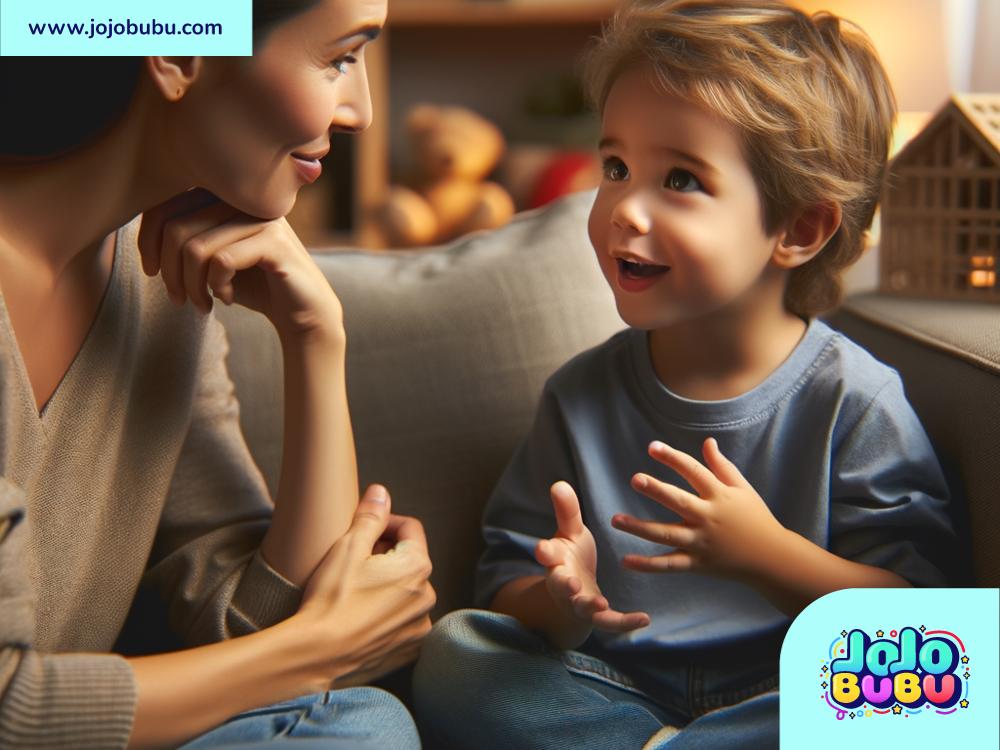The Importance of Open Communication With Children
Communication is a powerful tool that helps us connect, understand, and build strong relationships. When it comes to parenting, open communication with children plays an even more crucial role. It’s not just about talking; it’s about listening, understanding, and creating a safe space where children feel comfortable expressing themselves. Let’s explore why open communication matters, how we can practice it, and what benefits come from being open with kids.
Why Is Open Communication Important?
Children are like sponges; they soak up everything they see, hear, and experience. They are constantly learning about the world around them, and they rely on parents or caregivers to help them make sense of it all. Open communication creates an environment where children feel loved, valued, and understood. Here are some key reasons why open communication is important:
-
Build Trust: When parents communicate openly with their children, it builds a foundation of trust. Kids learn that they can come to their parents with anything—questions, concerns, or thoughts—and that their feelings will be respected.
-
Encourage Emotional Growth: Open conversations teach children how to express their emotions. When parents talk about feelings and offer a space for kids to share theirs, they grow emotionally strong and learn to handle challenges better.
-
Strengthen Relationships: Honest communication deepens the bond between parents and children. It shows that parents are involved and care about their kids' lives, which strengthens the relationship over time.
-
Develop Problem-Solving Skills: Open dialogue helps children learn how to think critically and solve problems. When parents talk through situations instead of giving orders, kids are encouraged to find solutions and think independently.
-
Build Confidence: Children who feel heard and understood are more likely to grow up with confidence. They know their thoughts and opinions matter, which boosts self-esteem.
How Can Parents Practice Open Communication?
The idea of “open communication” might feel overwhelming, but it doesn’t have to be complicated. It simply means making time to connect, treating children with respect, and being patient. Here are some practical ways parents can practice open communication:
-
Listen Without Interrupting: Listening is one of the simplest but most effective ways to show children that their voice matters. When kids want to talk, give them your full attention. Avoid interrupting or jumping in with solutions—just listen.
-
Ask Open-Ended Questions: Instead of asking yes-or-no questions, try open-ended ones that invite more conversation. For example, instead of “Did you have a good day?” you can ask, “What was the best part of your day?”
-
Validate Their Feelings: Whenever a child talks about how they’re feeling, validate it. Say things like, “I understand why you feel that way,” or “It’s okay to feel upset sometimes.” This helps children feel supported and encourages them to open up.
-
Create a Safe Space: Let your child know that they can talk to you about anything—big or small—without fear of judgment or punishment. If a child shares something sensitive, respond calmly and thoughtfully.
-
Lead By Example: Children learn by watching their parents. If you want them to communicate openly, start by practicing it yourself. Share your own feelings and experiences in age-appropriate ways. This shows kids it’s okay to talk about emotions.
-
Set Regular Check-Ins: Life can get busy, but setting aside regular time for one-on-one talk sessions keeps communication flowing. Whether it’s during dinner, before bed, or even in the car, make time to ask your child how they’re doing.
-
Avoid Criticism: When a child shares something, avoid reacting with criticism or anger. If you disagree with them, calmly explain your perspective instead of making them feel wrong or ashamed.
Benefits of Open Communication
When parents communicate openly with children, the benefits go far beyond the immediate moment. It helps them grow into well-rounded, emotionally strong individuals. Here are some of the positive outcomes:
-
Improved Behavior: Children who feel heard are less likely to act out. They develop a better understanding of boundaries and learn to express themselves in healthy ways.
-
Stronger Mental Health: Open communication can reduce feelings of loneliness, anxiety, or stress in children. A child who knows they can share their worries or fears will feel less overwhelmed.
-
Better Academic Performance: Kids who feel supported and confident are more likely to focus on school and perform well. Communication helps parents stay in the loop about their child’s school challenges and successes.
-
Life-Long Skills: Open communication teaches children how to be honest, empathetic, and thoughtful—skills they’ll carry into adulthood and use in every relationship they have.
Challenges and Patience
It’s important to remember that children may not always open up easily, especially if they’re shy or scared. Parents might face challenges along the way, but patience and consistency are key. Avoid pressuring them to talk and give them time to feel comfortable. Every child is different, and communication needs will vary.
Conclusion
Open communication with children is more than talking—it’s about building trust, sharing emotions, and strengthening relationships. When parents take the time to listen, ask open-ended questions, and create a safe space, kids feel valued and supported. The positive effects of open communication can shape a child’s entire life, helping them grow into confident, empathetic, and emotionally healthy adults.
So take it one step at a time, and remember: your words and actions today could make a world of difference in your child’s future. Make open communication a daily practice—it’s a gift that keeps on giving!

